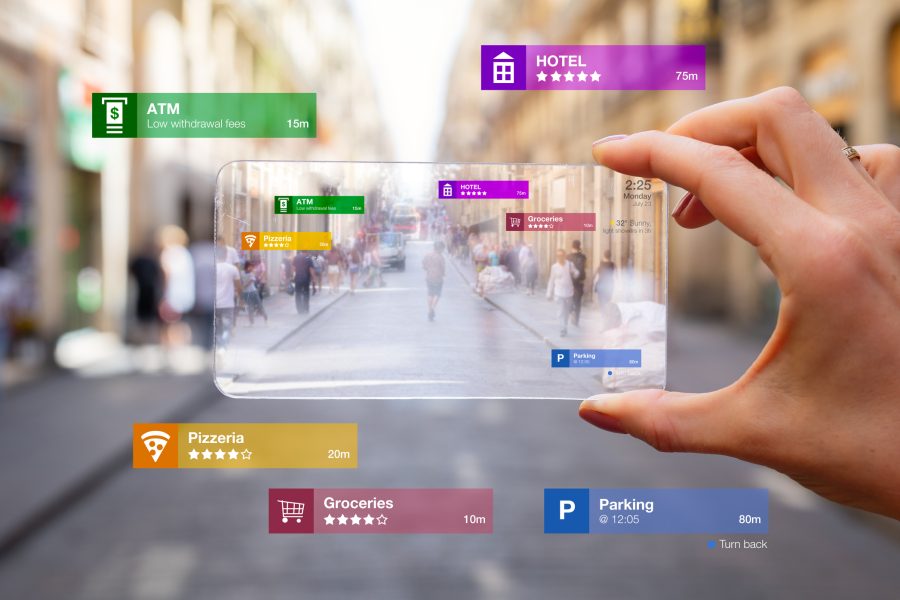10th February 2022 By Contributor
New technologies mean tourists are able to explore a destination without ever setting foot. Is this future of tourism a reality or simply science fiction? Victoria University of Wellington tourism management PhD student Naji Gharibi takes a look.


So, the future is here! Whether you are a believer in the Star Trek holodeck or James Cameron’s Avatar films, something is happening in the world that is going to change consumption and the future of tourism. That change is Extended Reality technologies (XR).
XR is an umbrella term that incorporates all kinds of realities supported by immersive technology including Virtual Reality (VR), Augmented Reality (AR), and Mixed Realities (MR). Virtual Reality refers to computer-generated environments that replicate places, people and objects, which provide a realistic sensory experience by the full immersion in a digital space. Whereas augmented reality is a mixture of digital and real world, as it creates digital information to the real environment. The VR and AR technologies are combined together to create MR, which is a more immersive experience.
Thanks to VR and MR technologies, tourists can experience visiting a destination without being there, just like the Star Trek Holodeck. Maybe in the future, the technologies will be so good, we may never leave home to go on a holiday. Is this reality or a science fiction proposition?
Today, XR technology tourists experience destinations that are remote or difficult to get to. Tourists can sample the destination before they arrive or when making decisions for choosing a future destination. So big is this change that according to Mordor Intelligence, the XR market is valued at US$33bn, and forecast to grow to be between US$125.2bn and US$463.7bn by 2026.
XR technologies have been defined as the most significant form of “metaverse technology”, as they include merging the physical and digital worlds through the use of headsets and wearable devices. The history of the “metaverse” goes back to 1992 when science fiction writer Neal Stephenson used the term in his novel Snow Crash, where humans, as avatars, interact with each other in a 3D virtual environment. Nevertheless, with the major shift from Facebook to Meta, technologies that are built on XR and virtual worlds are seeing a noteworthy push forward. Meta’s concentration is to bring the metaverse to our life and to connect us using virtual worlds.
Like every other industry, the arrival of the meta universe and the use of XR technologies means we are going to see change. These technologies transform how we can explore new destinations. Behaviours related to tourist experience or purchase can be associated with these new technologies. This means that the tourist industry will be vastly affected by these novel technologies. With metaverse, users can explore new destinations using navigation software. They could easily book a hotel and experience visiting them. They can get consultation, perform orders, and also pay in a convenient way. Even tourists who are already at the destination may go to metaverse to solve customer service issues, order meals in a hotel room, purchase latest destination experience products, or leave feedbacks on the services.
What we can see today is that these technologies are already present around us. In 2015, Marriott and Shrangri-La Hotels both used Samsung Gear VR headsets to enable guests to travel the world sitting on the couch in their rooms. Marriott’s famous ‘VRoom Service’ was considered to be a first in the travel industry. Also, Thomas Cook partnered with Visualise to use Samsung’s Gear VR headsets in several stores to offer potential tourists the chance to experience destinations such as Singapore, Greece and New York. In New Zealand, Michael Nees is inspiring the tourism industry and other sectors to apply digital technology to offer visitor experiences. Virtual Journeys plays a significant role in encouraging the tourism industry to use XR technology. Michael has created the first three of ten pilot visitor virtual reality tour experiences, such as an ecotour in the Abel Tasman National Park and a Nelson Tasman vineyard tour.
Given all these changes and the opportunities associated with XR technology, it’s important to embrace the changes that are going to occur. What does all this change mean for the future of tourism? What are emerging trends? How will tourists’ behaviour change?
Te Herenga Waka – Victoria University of Wellington is organising a webinar on 17 February to address these issues with leading researchers including Professor Timothy Jung (Manchester Metropolitan University), Dr Christopher Maymon (Te Herenga Waka – Victoria University of Wellington) and Associate Professor Faizan Ali (University of South Florida)
Register for the free webinar here.
Author Naji Gharibi is working towards a PhD in Tourism Management at the Te Herenga Waka – Victoria University of Wellington. Naji’s research aims to uncover the impacts of XR technologies on tourists’ behaviour. Her main interest is the future of tourism, new technologies and tourists’ behaviour/emotions.
24 Nov 2023 DHC launches first travel app for region
13 Jun 2023 New app showcases Rotorua forest, iwi stories